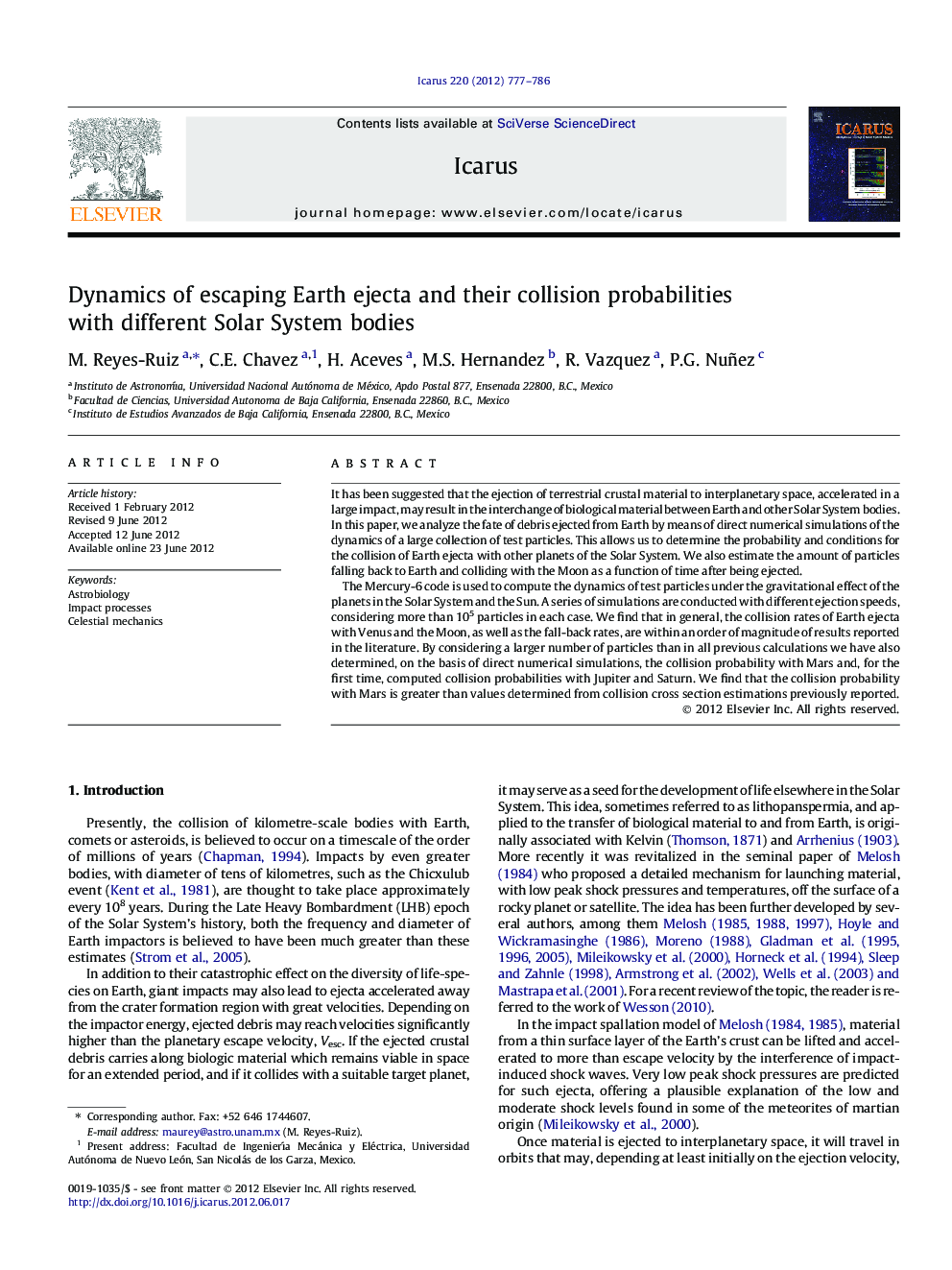| کد مقاله | کد نشریه | سال انتشار | مقاله انگلیسی | نسخه تمام متن |
|---|---|---|---|---|
| 1773442 | 1523564 | 2012 | 10 صفحه PDF | دانلود رایگان |

It has been suggested that the ejection of terrestrial crustal material to interplanetary space, accelerated in a large impact, may result in the interchange of biological material between Earth and other Solar System bodies. In this paper, we analyze the fate of debris ejected from Earth by means of direct numerical simulations of the dynamics of a large collection of test particles. This allows us to determine the probability and conditions for the collision of Earth ejecta with other planets of the Solar System. We also estimate the amount of particles falling back to Earth and colliding with the Moon as a function of time after being ejected.The Mercury-6 code is used to compute the dynamics of test particles under the gravitational effect of the planets in the Solar System and the Sun. A series of simulations are conducted with different ejection speeds, considering more than 105 particles in each case. We find that in general, the collision rates of Earth ejecta with Venus and the Moon, as well as the fall-back rates, are within an order of magnitude of results reported in the literature. By considering a larger number of particles than in all previous calculations we have also determined, on the basis of direct numerical simulations, the collision probability with Mars and, for the first time, computed collision probabilities with Jupiter and Saturn. We find that the collision probability with Mars is greater than values determined from collision cross section estimations previously reported.
► We model the dynamics of Earth ejecta resulting from a giant impact.
► Collision probabilities are calculated in terms of a direct numerical simulation.
► A large fraction of the colliding particles do so in less than 10,000 years.
► Impact locations that lead to collisions with Jupiter and Saturn are determined.
Journal: Icarus - Volume 220, Issue 2, August 2012, Pages 777–786